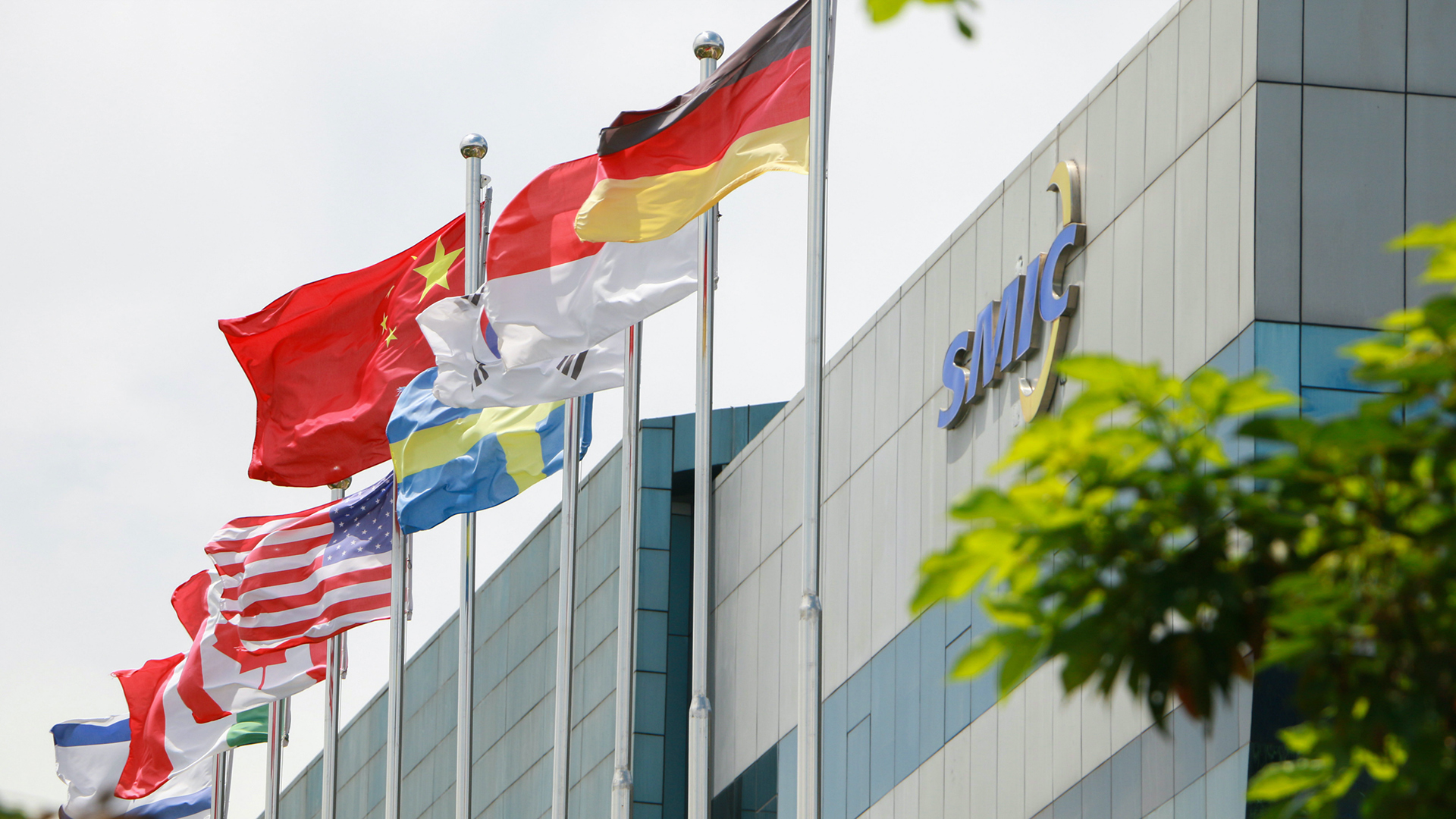Chinese foundry SMIC may have broken the 5nm process barrier, as evidenced by a new Huawei laptop listed with an advanced chip with 5nm manufacturing tech — a feat previously thought impossible due to U.S sanctions.
中国铸造型SMIC可能打破了5NM的工艺障碍,这是一台新的华为笔记本电脑,该笔记本电脑上列出了带有5NM制造技术的高级芯片,这是由于美国制裁而导致的一项壮举。
This year, SMIC shocked the world after it began mass production of Huawei's HiSilicon Kirin 9000S processor using its second-gen 7nm process technology. But the company seems to have at least one more trick up its sleeve: a 5nm fabrication process that is either already in use for high-volume manufacturing (HVM) or is in the final stages of its development. In fact, Huawei now lists a chip made on a 5nm-class process node — an eight-core Arm-based HiSilicon Kirin 9000C processor with Arm Mali-G78 graphics for laptops — on its website.
今年,Smic使用其第二代7NM工艺技术开始了华为的Huawei Hisilicon 9000S处理器的大规模生产后,震惊了世界。但是,该公司似乎至少有一个技巧:一个5nm的制造工艺,该工艺已经用于高量制造业(HVM),或者处于其开发的最后阶段。实际上,华为现在在其网站上列出了5nm级流程节点上的芯片 - 一个基于八核ARM的Hisilicon Kirin 9000c处理器,上面有ARM MALI-G78用于笔记本电脑的芯片。
A posting on Huawei's website claims the Qingyun L540 laptop is"equipped with the Kirin 9006C chip, utilizing a 5nm process technology, eight cores, with a maximum clock speed of up to 3.13 GHz, offering higher performance, lower power consumption, and faster processing speeds."
华为网站上的一篇文章声称,Qingyun L540笔记本电脑“配备了Kirin 9006C芯片,利用5NM工艺技术,八个内核,最高时钟速度高达3.13 GHz,可提供更高的性能,较低的功耗,较低的功耗和加速处理速度。”
The Kirin 9006C's general-purpose cores are listed at up to 3.13 GHz, which is only slightly lower than the clocks that TSMC and Apple could wring out of the original TSMC N5 process technology (the maximum frequency for Apple's M1 high-performance cores is 3.20 GHz). Meanwhile, the Kirin 9006C's peak clock rate looks similar to another chip, the Kirin 9000, which was produced for Huawei by TSMC.
Kirin 9006C的通用核心的列表列为3.13 GHz,仅略低于TSMC和Apple可以从原始TSMC N5过程技术中扭动的时钟(Apple M1 M1高表现核心的最大频率为3.20 GHz)。同时,Kirin 9006C的峰值时钟速率看起来类似于TSMC为华为生产的另一个芯片Kirin 9000。
Indeed, when TSMC began to produce chips made on its N5 (5nm-class) fabrication technology in mass quantities in early Q2 2020, Huawei was not blacklisted by the U.S. Department of Commerce, and the foundry could still ship 5nm chips — which it did in huge volumes. Huawei formally introduced its TSMC N5-based Kirin 9000 SoC in late August 2020 and confirmed that the chip was made in Taiwan.
的确,当TSMC在2020年代初期用大量数量的N5(5nm级)制造技术生产芯片时,华为并未被美国商务部列入黑名单,而铸造厂仍然可以运送5NM芯片 - 它的作用很大。华为在2020年8月下旬正式推出了基于TSMC N5的Kirin 9000 SoC,并确认该芯片是在台湾制造的。
There are many similarities between the Kirin 9000 and the Kirin 9006C, which some might argue indicates Huawei is leveraging stock it obtained three years ago for its current PCs. While this could be true, keeping a massive quantity of premium processors (which were expensive to make on TSMC's then leading-edge node) for three years doesn't make a lot of sense, especially bearing in mind that the original Kirin 9000 featured a built-in 5G modem (something the Kirin 9006C presumably lacks) and could be used for a premium smartphone rather than for an inexpensive laptop. As such, it is possible that the company has turned to SMIC to create the processors.
Kirin 9000和Kirin 9006c之间有许多相似之处,有人可能会争辩说,华为正在利用三年前获得的股票来实现目前的PC。虽然这可能是正确的,但要保留大量的高级处理器(在TSMC当时的领先节点上制作价格昂贵)三年没有很多意义,尤其是要牢记原始的Kirin 9000具有内置的5G调制解调器(大概是Kirin 9006C,可能缺乏Kirin 9006C),并且可以用于优质智能手机,而不是用于优质的智能手机而不是in Indexpive。因此,该公司可能已经转向SMIC来创建处理器。
It isn't entirely surprising that SMIC could have broken through the 5nm barrier, as persistent industry chatter has indicated the foundry is close to further exceeding the limits imposed by US sanctions."SMIC is preparing a 5nm process through DUV, and photomask usage is expected to increase further," an expert in the semiconductor industry recently told The Elec.
SMIC可能会破坏5NM的障碍并不奇怪,因为持续的行业聊天表明该铸造厂接近进一步超过了美国制裁施加的限制。半导体行业的专家最近告诉ELEC:“ SMIC正在通过DUV准备5NM的过程,预计将光药的使用进一步增加。”
While an anonymous commenter is not a particularly reliable source, this isn't the first time that SMIC's 5nm technology, which relies solely on deep ultraviolet (DUV) lithography, has been mentioned. SMIC briefly mentioned its post-7nm fabrication process in late 2020, and an industry expert further reemphasized SMIC's 5nm ambitions in September 2022. Both comments indicate that SMIC has been working on a DUV-only 5nm node for quite some time. The technology may be ready by now, but there isn't an independent confirmation yet.
尽管匿名评论者不是特别可靠的来源,但这并不是Smic的5NM技术(仅依赖于深紫外线(DUV)光刻)的第一次。SMIC在2020年末短暂地提到了其7NM后的制造过程,一位行业专家在2022年9月进一步重新强调了Smic的5NM野心。这两种评论都表明SMIC已经从事仅使用DUV的5NM节点工作了一段时间。该技术现在可能已经准备好了,但是还没有独立的确认。
SMIC does have chipmaking tools that could conceivably be used to create 5nm processors. The ASML Twinscan NXT:2000i features a ≤38nm resolution, which is good enough for 7nm-class mass production using double-patterning lithography techniques. However, a finer resolution is required for 5nm-class process technologies. Chipmakers can use triple or even quadruple patterning to produce it. This lithographic technique involves splitting a complex pattern into several simpler patterns, which are then printed sequentially to achieve higher precision and detail. Multi-patterning is a tricky process that affects yields and the number of chips per wafer that can be used, so typically, it has been limited due to its impact on chip costs.
SMIC确实具有芯片制造工具,可以想象可以用来创建5NM处理器。ASML Twinscan NXT:2000i具有≤38Nm的分辨率,使用双图光刻技术足以容纳7nm级的质量生产。但是,5NM级工艺技术需要更精细的分辨率。芯片制造商可以使用三重甚至四倍的图案来生产它。这种光刻技术涉及将复杂的模式分为几种更简单的模式,然后将其顺序打印以实现更高的精度和细节。多门是一个棘手的过程,它会影响产量和可以使用的每晶片的芯片数量,因此通常,由于其对芯片成本的影响,它通常受到限制。
We don't know for sure whether SMIC has initiated mass production of chips on its 5nm-class technology. Given the tensions between the U.S. and China in general and curbs against Huawei and SMIC in particular, it is unlikely that either company will fully disclose its actual technological capabilities. On the one hand, it is prestigious to produce 5nm-class chips despite the U.S. crackdown; on the other hand, neither Huawei nor SMIC want their partners and tool suppliers (or how they obtain equipment or actual chips) to be discovered by the U.S. and its allies.
我们不确定SMIC是否已经在其5NM级技术上启动了筹码的大规模生产。鉴于美国和中国之间的紧张局势尤其是针对华为,尤其是SMIC的紧张局势,任何一家公司都不太可能完全披露其实际的技术能力。一方面,尽管美国镇压了,但生产5nm级的芯片还是很有声望的。另一方面,华为和SMIC都不希望其合作伙伴和工具供应商(或他们如何获得设备或实际芯片)被美国及其盟友发现。

